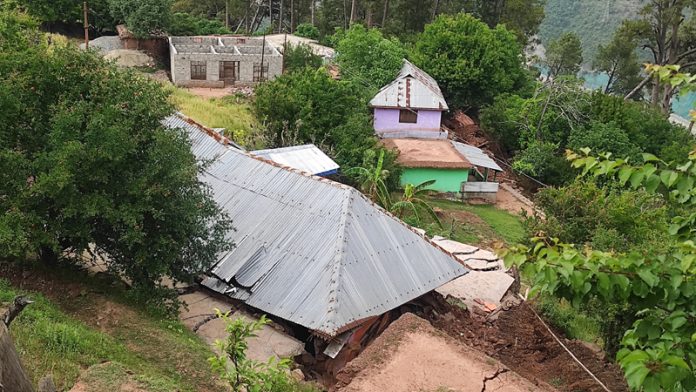The incident in the Ramban district, where more than 50 houses were damaged due to the sinking of a substantial portion of the road, underscores the critical need for robust disaster management strategies in vulnerable areas. While it’s relieving that there were no casualties reported, the impact on livelihoods and infrastructure cannot be ignored. This incident, coupled with a similar occurrence last year, emphasises the urgent necessity for proactive measures to mitigate such disasters and enhance resilience within communities. Beyond immediate relief efforts, there is a pressing need to delve into the root causes of these disasters. The sinking of land in the Ramban district points towards underlying geological vulnerabilities that demand a thorough investigation.
This incident in Ramban district is not an isolated occurrence within the region, as similar incidents have been reported in other districts as well. Despite expert evaluations, the root cause remains elusive, leading to recurring incidents year after year. Speculations abound, with some attributing the sinking of land to the blasting of mountains for roads and tunnels, while others point to the proliferation of hydroelectric projects causing water seepage into the mountains and subsequent land sinking. To dispel these speculations and address the pressing concerns of affected communities, a comprehensive study must be undertaken. It is paramount to ascertain the true cause behind these incidents, as families continue to lose their homes with alarming frequency.
Additionally, the significant damage to power infrastructure underscores the need for a thorough inspection and audit of the region. Local authorities must heed any observations regarding potential risks in the area, as no reported incident can be taken lightly anymore. Timely action is crucial to prevent the loss of life and mitigate further material damages. Temporary solutions are insufficient, as the underlying cause of such extensive land sinking must be identified. In light of ongoing construction projects, such as tunnels, road widening, and railway development, it is important to safeguard these projects against potential hazards. While the current focus rightly remains on providing relief to affected families, subsequent efforts must prioritise uncovering the fault line responsible for these incidents. Development should never come at the expense of lives or the well-being of local populations. The mystery surrounding these occurrences must be resolved promptly. The Geological Survey of India and various engineering institutes must be mobilised to provide comprehensive reports, shedding light on the underlying causes. Only through a concerted effort to understand and address these issues can we ensure the safety and prosperity of communities in the region.
Furthermore, while addressing the immediate needs of the affected population is paramount, long-term planning is equally crucial. A comprehensive disaster management framework must be devised, encompassing early warning systems, land-use planning, and infrastructure resilience measures. This entails incorporating risk assessment into development plans, ensuring that construction adheres to safety standards, and establishing contingency measures for emergencies. Local volunteers played a pivotal role in assisting affected families, showcasing the strength of solidarity in times of adversity. This underscores the importance of community-based disaster preparedness initiatives where residents are trained to respond effectively to emergencies and contribute to relief efforts. Additionally, leveraging technology, such as GIS mapping and satellite imagery, can aid in assessing damages and prioritising interventions. The integration of data-driven approaches into decision-making processes can enhance the effectiveness of disaster management strategies.
Addressing the socio-economic dimensions of vulnerability is integral to building resilience. Many of the affected families in the Ramban district are now displaced and require sustained support for rehabilitation. Beyond immediate relief provisions, there must be efforts to restore livelihoods, provide psychosocial support, and strengthen social safety nets. This necessitates collaboration between Government agencies, NGOs, and civil society organisations to address the multifaceted needs of the affected population. Looking ahead, the Ramban incident serves as a wake-up call for policymakers and stakeholders to re-evaluate the stakes in the region.


